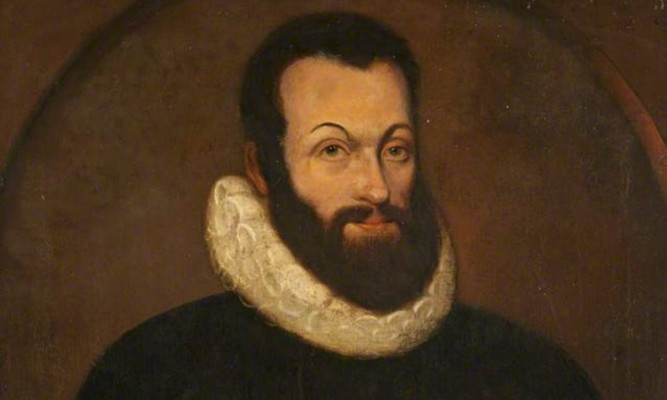A global reunion will this month celebrate the life of a “persistent Scot”, which began in the Mearns and ended brutally in Fife, by way of the plague-filled streets of Dundee and Europe.
The quincentennial of George Wishart’s birth will see namesakes converge in St Andrews to discuss a “heretic” whose martyrdom was a key moment in the Reformation.
Former Montrose schoolmaster Wishart (1513-1546), pictured, was burned at the stake for his beliefs. He preached during a plague epidemic in Dundee’s East Port and was John Knox’s mentor.
He was captured by Cardinal Beaton of St Andrews, tried for heresy and burned at the stake in 1546.
Jack Wishart, 74, one of three Wisharts organising the events, had the idea two years ago.
“I began with an interest in the family tree and have been collecting Wisharts for 40 years now I have about 21,000 of them recorded.
“We expect more than 50 Wisharts and relatives coming from all over the world to St Andrews, plus about 25 men and women with a general interest in Wishart and the Reformation.”
He continued: “After the historical aspect has been covered, the Wisharts will concentrate on genealogical matters.
“I and my colleague David Wishart went leafleting at the general assembly of the Church of Scotland and lots of people didn’t know anything about him. This is a surprise as he was known as a good man, and one who believed in his truth so much that he chose to die for it.
“He had many, many opportunities to recant but he didn’t.”
Wishart was from Pittarow House in the Laurencekirk area and studied theology in Leuven in the Netherlands, where he received his Master’s degree in 1532 before taking up a post in Montrose.
After teaching the New Testament in Greek, he was summoned by the Bishop of Brechin but fled to England, where he was captured by the Inquisition and released due to public demand.
A virulent attack against the church in the town’s St Nicholas Church in May 1539 led to accusations of heresy, but he fled to Europe when the case stalled.
During his stay, Wishart translated the first Swiss creed, the Confessio Helvetica, which was printed after his death.
He would preach at Corpus Christi College in Cambridge, returned to a house near the church of Montrose in which he expounded the scriptures and travelled with Knox to Perth, Fife and Leith.
It was during a plague epidemic in Dundee that his later nemesis, Archbishop Cardinal David Beaton, tried to have him killed.
“He climbed on a rise and literally stood between the living and the dying,” said a contemporary.
Cardinal Beaton had Wishart captured in Ormiston and brought to St Andrews.
Several days after Wishart’s execution, Beaton was murdered as the country’s Protestant Reformation was galvanised by what many Scots viewed as an unnecessarily brutal death.
The conference has been sponsored by the Society in Scotland for the Propagating of Christian Knowledge, the Hope Trust and the Institute of Scottish Historical research, part of St Andrews University.
Applications to attend can be made no later than August 16 to Mr Wishart at wishartjac@aol.com, and more information can be found at www.st-andrews.ac.uk/georgewishart.
